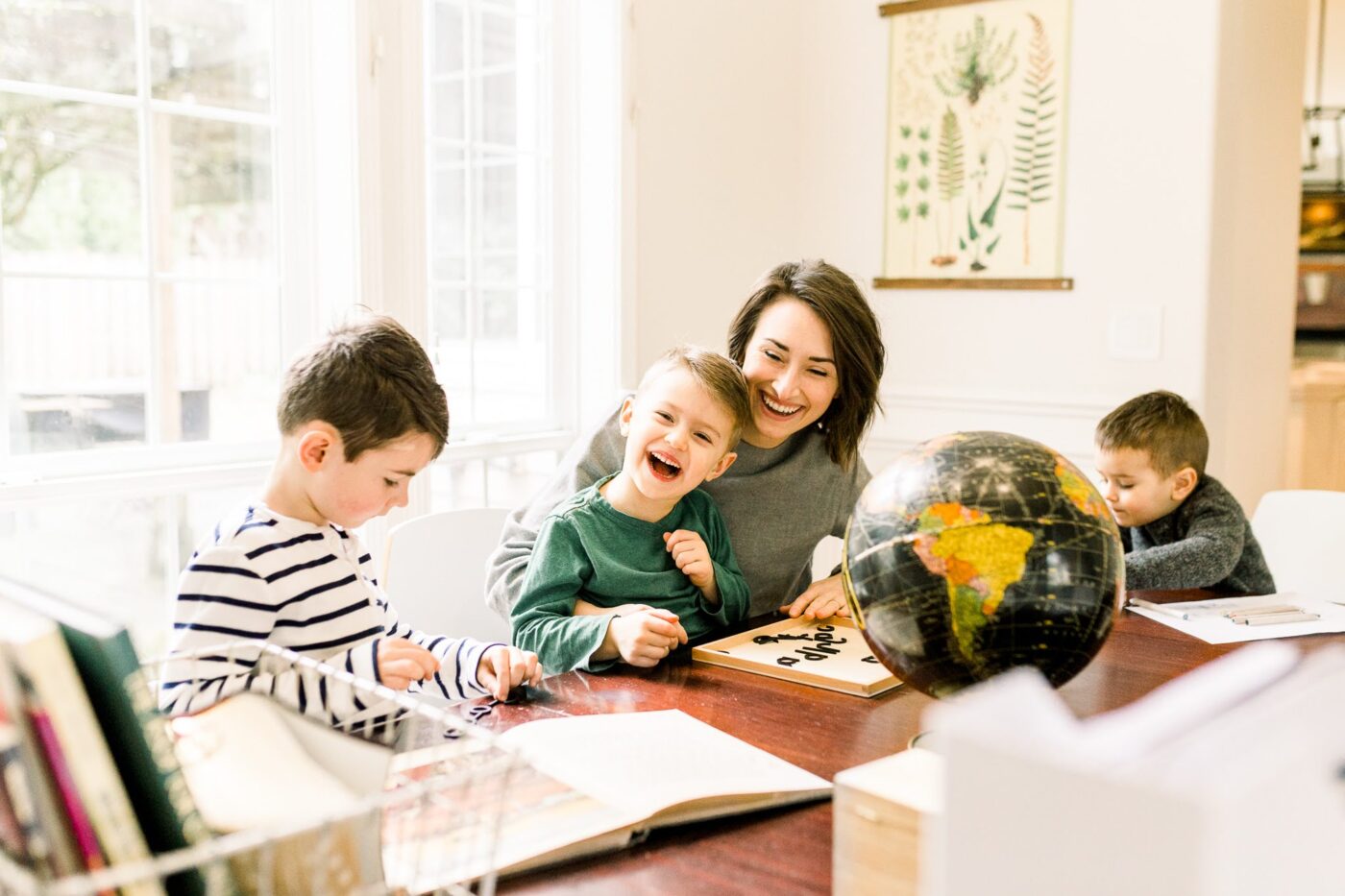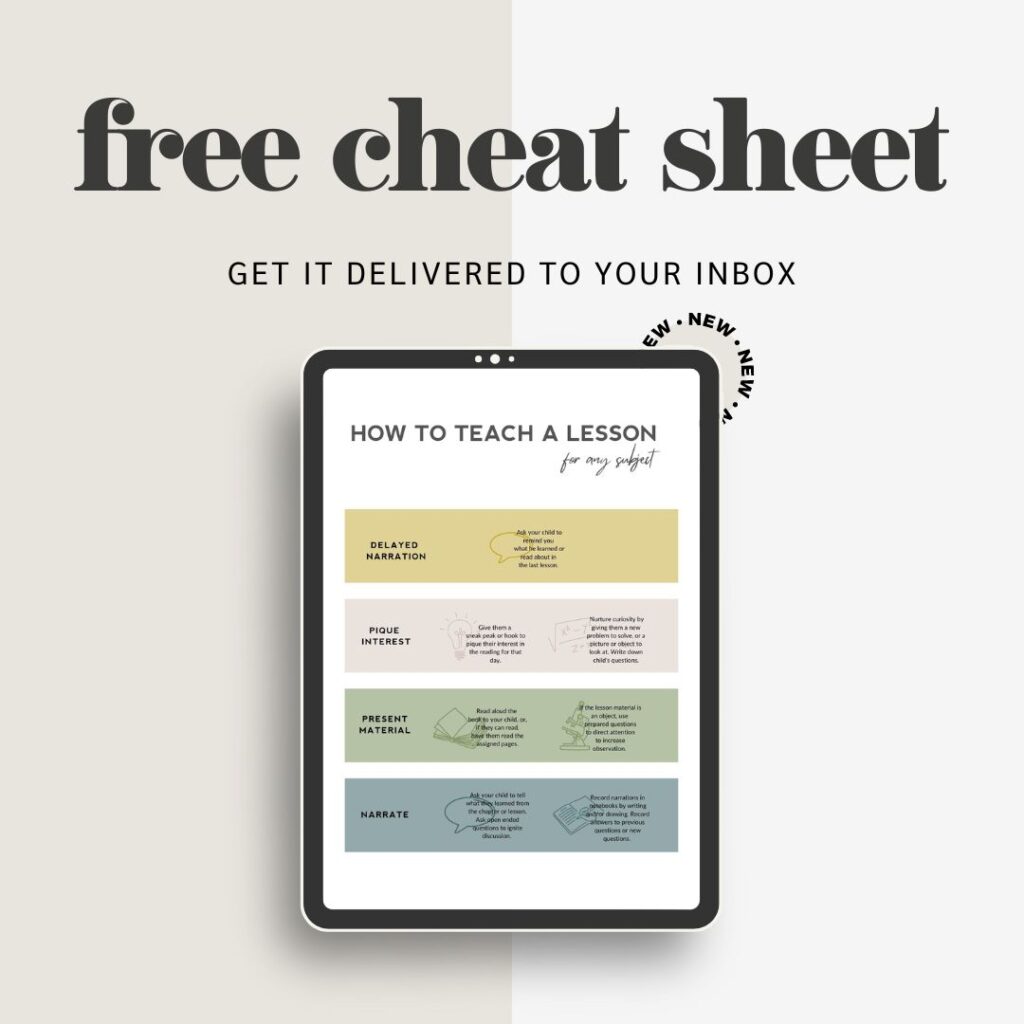You have no items in your cart. Want to get some nice things?
Go shopping
Six years ago I almost gave up homeschooling. And my son had just started first grade.
He said he hated school lessons. And honestly, I kind of did, too.
We both felt like slaves to the curriculum, but I didn’t know what to do. I wanted to break away from the scripted lessons, but I didn’t know how. I didn’t know how to teach. It was in that moment that I truly wanted in life became crystal clear: I wanted to become a teacher. I wanted to teach people, not lessons.
This desire led to years of wondering, researching, and learning. I can’t take credit for these methods; its something I’ve discovered. Something that has existed since before public schools, even printed books. It’s been revolutionary in my home and that’s why I passionately share it with you, mamma.
The following method can be used for all subjects and all ages — from kindergarten to high school, and from math to history. If you’re interested in learning more about the main teaching tools in this post– retrieval, narration, and generation–check out my podcast episode #26 Teaching Myths and Time-Tested Methods.
So all these tools make up a universal method that works for all subjects. And here’s what that looks like:
- Delayed Narration (i.e. retrieval) First thing you want to do is ask your child to remind you of what you learned about last time. In cognitive science, this is called retrieval and every time your child is asked to retrieve knowledge then that track and their mind becomes stronger and easier for them to recall that information. So simply ask the to remind you of what happened in the story or chapter, or what you learned about last time.
- Pique Interest (i.e. generation). The next thing you want to do is pique their interest. The best way to do this is to nurture their curiosity by getting them asking questions. Charlotte Mason said to give them a little sneak peek of the story or a sample of what the lesson has to hold to get them excited to know what happens. if it’s a subject like math or I like to use a tool called generation. This simply is giving your child a problem or something new that they’ve never seen and having them solve it, in the case of a math problem, if it is an object for nature, study have them generate questions about that object. You can also use the question formulation technique. I’ve adapted this to use for my home if you’re interested in learning more about that I have a whole video series on that in my membership and there’s also a book called make just one change. Things that are a good question focus would be maps, bjects like a plant or an animal (even an animal noise!), a photo for history, a short statement or word. You can even use artwork for picture study and song for composer study.
- Present Lesson Material (with books or real objects). So after your child’s interest has been piqued and they’re ready to learn, then you can dive into the material. Charlotte said that children are best educated on books and things. So that’s what I use. For nature study I try to use the real thing whenever possible. Even if it means going on walks and searching for that real thing for science, it would be real science experiments, for other subjects, it would be living books written by great authors and people experienced in that field. instead of you reading the books and giving your child a secondhand account send them straight to the books for their lesson material. Children should be allowed to learn from the book or object as much as possible without interference from you. This means letting them read and wrestle with the book on their own, or letting them observe the object with just a few questions from you to help direct their attention.
- Narrate and Record in Notebooks (i.e. elaboration). After you’ve gotten a lot of living ideas through books or things and your child’s mind has been nourished, then it’s time to narrate and to do the real work of learning. I kind of consider this the exercise for my child’s mind. I simply asked my child to tell me what they learned and if they get older, you can ask for things more specific like explain,describe justify. But in the early years, I just asked them to tell me what they learned about in this chapter or experiment. Now this is where you can do notebooks as well. Notebooks are a form of narration where the child does write down or draws what they learned. I always require them to do an oral narration to tell me what they’ve learned but then as they get older, they add written narration and especially when they’re young I like them to draw what they’ve learned as well in addition to or written narration. for nature, this would be in their nature notebook for literature or history. This would be any composition notebook and if they stumbled on some quotes or beautiful writing that they wanna record, they could put that in their common place. For history, they would record dates and draw pictures of artifacts drawings, or other things in their book of centuries. For math, you can ask your child to use the concept or rules that they’ve learned in this lesson to make up their own math problems. This is really where they learn to apply what they’ve learned and you can see that they understand the concept.
And that’s it! Those are the four components of a effective lesson for any subject. I’ve been using this method for years now and it makes it so much easier to plan prepare and execute a lesson for any subject. And I know that my child’s mind is being nourished as well as exercised. It puts the responsibility of learning on my child, but also gives them enough structure that I know they are learning and gaining life-long habits.

Click on the link below to get a lesson cheat sheet with all these steps laid out to reference in school lessons.
